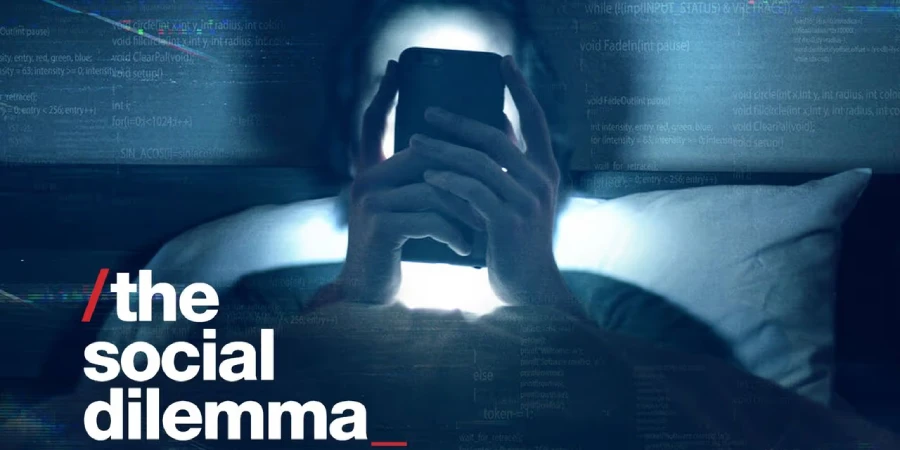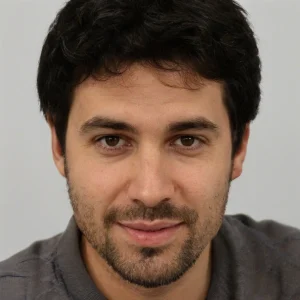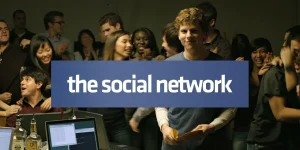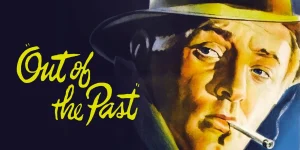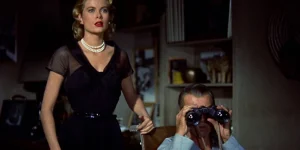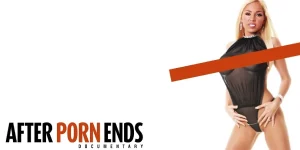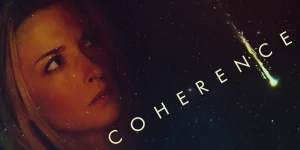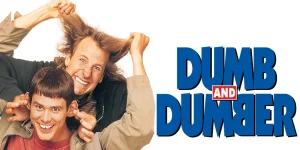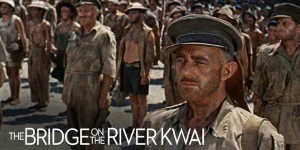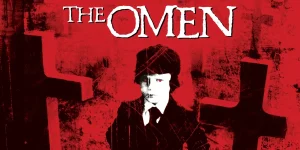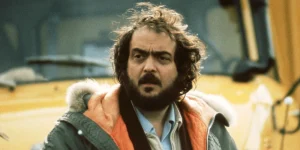The Social Dilemma is a gripping docudrama directed by Jeff Orlowski, diving into the manipulative mechanics behind social media platforms. Blending interviews with former tech industry insiders and fictionalized dramatizations of a teenager’s life unraveling due to algorithmic manipulation, the film serves as both a wake-up call and a chilling reminder of how deeply our lives are shaped by the platforms we scroll through every day.
Table of Contents
ToggleDetailed Summary
The Rise of Algorithmic Control
The documentary begins by introducing viewers to former employees and executives from major tech companies like Google, Facebook, Twitter, Instagram, and Pinterest. These insiders, once at the heart of the innovation engine, now express grave concerns about what they helped build. They explain how the goal of maximizing user engagement gave rise to sophisticated algorithms that monitor behavior, predict actions, and push content designed to keep users addicted.
The interviews are juxtaposed with dramatized scenes following a teenage boy named Ben, whose growing addiction to his smartphone and social media slowly begins to fracture his family and mental well-being. His sister tries to quit social media for a week but struggles to stay off it, highlighting just how embedded these tools are in modern life.
Profit Over People
The film reveals that the real product of social media is not the software—it’s you. Users are the product, and what’s being sold is their attention. Advertising-based revenue models have led to a race to the bottom for attention, with platforms using personalized data to predict and manipulate user behavior.
One critical moment is when one of the insiders says, “If you’re not paying for the product, you are the product.” This line becomes a thematic anchor throughout the film. As algorithms optimize for engagement, they amplify content that triggers emotional reactions—often outrage, division, or sensationalism.
Polarization and Misinformation
The film also dives deep into the societal consequences of these technologies: increased political polarization, disinformation, mental health crises, and even the destabilization of democracies. Interviewees explain how fake news spreads faster than real news due to its emotionally provocative nature, and how recommendation algorithms pull people toward extreme content.
Ben, the fictional teen, begins to consume conspiracy content and is pulled into an echo chamber. His descent reflects what’s happening to millions in real life, leading to extremist beliefs, civic unrest, and fractured social cohesion.
Real-World Impacts
Footage of real-life events—like protests, misinformation campaigns, and the rise of QAnon—are layered throughout the documentary to ground its warnings in reality. The message is clear: these platforms are not neutral tools, but active participants shaping the future of society.
Movie Ending
The film ends on a sobering note. In the dramatized story, Ben is arrested during a protest, having been fully radicalized by content fed to him by social media algorithms. His family is left fractured, and his younger sister, who once resisted social media, has started using it again, hinting that the cycle continues.
In the documentary portion, the tech insiders collectively express a sense of urgency. Many of them admit they don’t let their own kids use the platforms they helped create. The documentary concludes with each of them offering ideas for solutions—such as regulatory reform, ethical tech design, and public pressure—but also a stark warning: if nothing changes, the consequences will grow more severe.
The final scene shows a visualization of algorithms interacting with a digital representation of Ben, tweaking what he sees and tracking his emotions in real-time. This visual metaphor reinforces the idea that our behaviors are not just being monitored—they’re being actively influenced.
There’s no moment of triumph, only an invitation to awareness and action. The message is not hopeful—it’s a call to arms.
Are There Post-Credits Scenes?
No, The Social Dilemma does not have a post-credits scene. Once the credits begin, the documentary has fully concluded. However, the credits do list various organizations and initiatives that viewers can explore if they’re interested in tech reform or digital ethics.
Type of Movie
The Social Dilemma is a documentary-drama hybrid, often referred to as a docudrama. It combines interviews, real-world examples, and fictionalized narrative storytelling to illustrate the effects of social media and tech addiction.
Cast
While the interviews feature real people, the dramatized sequences include actors:
- Skyler Gisondo as Ben
- Kara Hayward as Cassandra (Ben’s sister)
- Vincent Kartheiser as The Algorithm (portrayed as a personified trio controlling Ben’s feed)
- Sophia Hammons as Isla (Ben’s younger sister)
Notable interviewees include:
- Tristan Harris (Former Design Ethicist at Google, Co-Founder of the Center for Humane Technology)
- Jaron Lanier (Computer scientist and tech philosopher)
- Justin Rosenstein (Co-creator of the Facebook “Like” button)
- Tim Kendall (Former President of Pinterest)
Film Music and Composer
The music was composed by Mark Crawford. The score is subtle yet ominous, reflecting the psychological tension and ethical weight of the topic. It helps drive home the dystopian undercurrent present throughout the documentary.
Filming Locations
Much of the documentary was filmed in California, including Silicon Valley, where many of the interviewees live and work. The dramatized sequences were shot in generic suburban settings to emphasize how this issue affects everyday families, regardless of geography.
The visual segments representing “The Algorithm” were filmed on a stylized set resembling the inside of a digital brain, using clean, minimalist production design to reflect the clinical, calculated nature of algorithmic decisions.
Awards and Nominations
- Primetime Emmy Award Nominee for Outstanding Documentary or Nonfiction Special
- BAFTA Nomination for Best Documentary
- Winner of Best Documentary by the Los Angeles Online Film Critics Society
- Shortlisted for the Academy Awards Best Documentary Feature (but not nominated)
Behind the Scenes Insights
- Many interviewees had never spoken on record before. Several insisted on anonymity or careful phrasing due to NDA obligations.
- Vincent Kartheiser plays multiple roles as parts of the same AI system—intended to represent different aspects of algorithmic design: engagement, growth, and monetization.
- Director Jeff Orlowski was inspired by the rising tide of misinformation and tech addiction, particularly among teens.
- The film was originally conceived as a traditional documentary, but dramatized sequences were added to reach broader audiences emotionally.
Inspirations and References
- Loosely inspired by the book “Ten Arguments for Deleting Your Social Media Accounts Right Now” by Jaron Lanier.
- Draws influence from Black Mirror, especially in how it visualizes abstract tech concepts.
- Echoes themes from The Age of Surveillance Capitalism by Shoshana Zuboff.
Alternate Endings and Deleted Scenes
There is no publicly confirmed alternate ending. However, the filmmakers did film longer, more detailed versions of the dramatized narrative. Some deleted scenes reportedly showed more severe consequences of algorithmic manipulation, including deeper psychological deterioration, but were cut for pacing.
Book Adaptations and Differences
The film is not a direct adaptation of a book but is heavily influenced by academic and nonfiction literature on surveillance capitalism, behavioral psychology, and technology ethics. Unlike books, the film uses emotional storytelling and visual metaphors to translate complex systems into digestible concepts.
Memorable Scenes and Quotes
Key Scenes
- The scene where “The Algorithm” trio (played by Vincent Kartheiser) decides what content to show Ben based on his emotional state.
- Ben being manipulated into attending a protest, culminating in his arrest.
- Jaron Lanier explaining how losing social media would mean “losing some fake, brittle popularity.”
Iconic Quotes
- “If you’re not paying for the product, then you are the product.”
- “There are only two industries that call their customers ‘users’: illegal drugs and software.”
- “It’s not that the machines are going to kill us. It’s that they will persuade us to kill each other.”
Easter Eggs and Hidden Details
- The trio of algorithms mimics the structure of a tech team: one optimizes engagement, another handles monetization, and the third focuses on growth.
- The dramatized interface shown in the algorithm scenes is a stylized blend of real social media UIs.
- Several interviewees mention specific behind-the-scenes stories that hint at real-world scandals (like Facebook’s data harvesting) without naming them directly.
Trivia
- Director Jeff Orlowski also directed Chasing Ice and Chasing Coral, making this his first dive into the tech world.
- After the film’s release, Google Trends showed a spike in searches for “delete social media.”
- Facebook reportedly issued internal memos warning employees about the film’s impact.
- The film quickly became one of the most-watched documentaries on Netflix in 2020.
Why Watch?
Because The Social Dilemma makes something invisible—algorithmic manipulation—visibly terrifying. It’s not just about social media being “bad”; it’s about the system that incentivizes division, distraction, and addiction. If you care about your mental health, your democracy, or your children’s future, this film is essential viewing.
Director’s Other Movies
- Chasing Ice (2012)
- Chasing Coral (2017)
Both focus on environmental issues but share a similar tone of urgency and visually immersive storytelling.
Recommended Films for Fans
- The Great Hack (2019)
- Coded Bias (2020)
- Men, Women & Children (2014)
- Terms and Conditions May Apply (2013)
- Lo and Behold: Reveries of the Connected World (2016)

